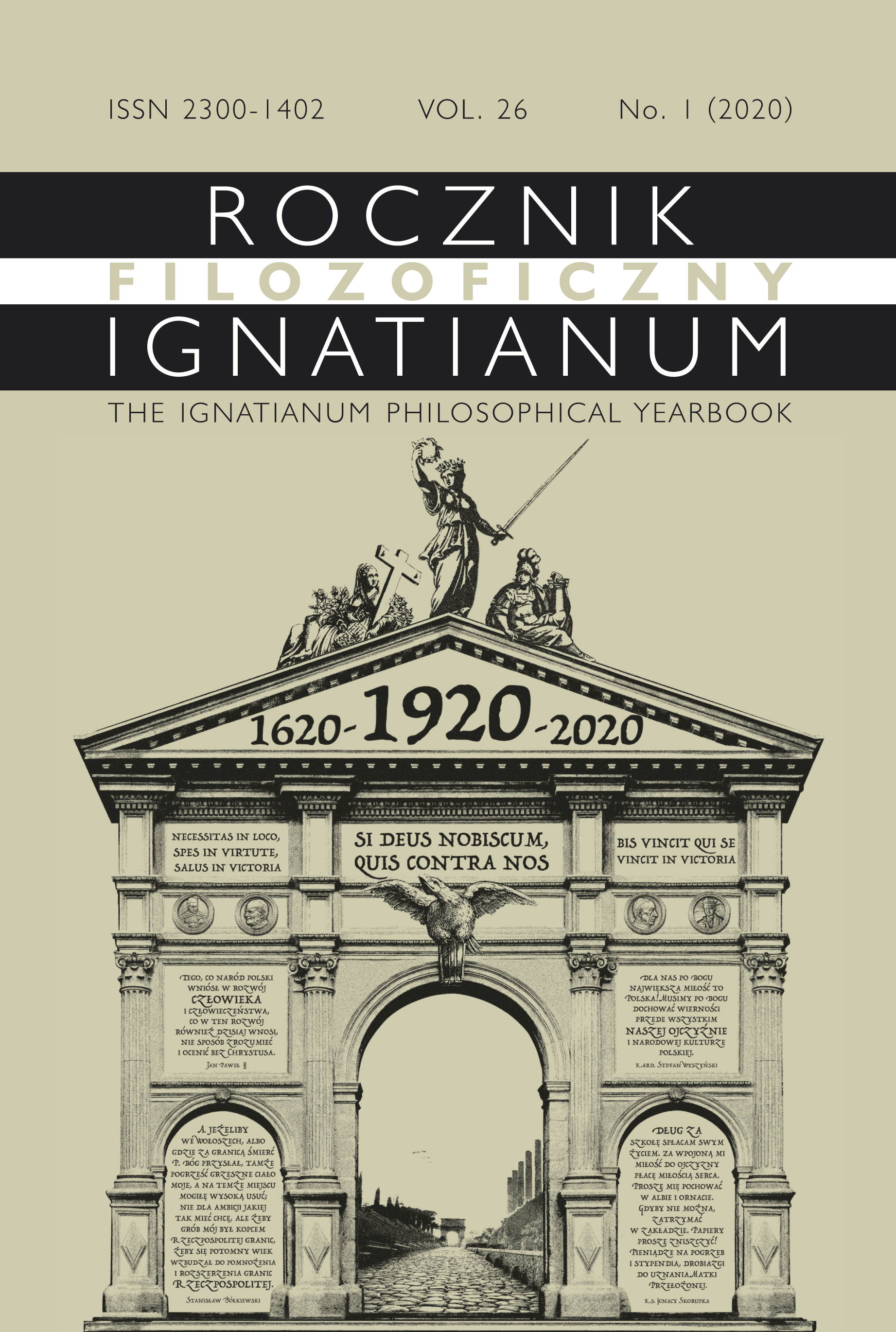Introduction
Abstrakt
The graphic design of this issue of The Ignatianum Philosophical Year- book front cover includes the entrance gate to the Wawel Royal Castle in Krakow. The gate itself is transformed into a triumphal arch opening towards the road recognizable to every person who feels a bond with the cultural heritage of the Western world. This road is the via Appia, once built by the will of Appius Claudius Caecus, and considered one of the oldest Roman tracts. Called “the queen of all roads” by the Romans them- selves, it is inseparable from the Eternal City for everyone raised on the values of Western civilization. Mikołaj Sęp-Szarzyński wrote about it in his famous epitaph: “today in Rome defeated, Rome invincible,” express- ing this way the overwhelming awareness of connecting the past with what we experience as the present. It was on this road that the legendary scene recalled by Henryk Sienkiewicz took place, in which the question: quo vadis, Domine? is asked by the apostle Peter, fleeing from the Eternal City, to Christ he meets on the Appian Way. The power of this question is understood by anyone who is able to see in the roots of Classical and Christian culture all that is the most important for the Western culture not only in terms of its past, but also in terms of its future.
Copyright (c) 2021 Akademia Ignatianum w Krakowie

Utwór dostępny jest na licencji Creative Commons Uznanie autorstwa 4.0 Międzynarodowe.
Rocznik przyjmuje do druku wyłącznie materiały, które nie wchodzą w żaden konflikt interesów, żaden konflikt z prawem autorskim itp. Redakcja prowadzi działania przeciw: plagiatom, ghostwriting1, guest/honorary authorship2 itp. Autor pracy zbiorowej, który jest pierwszy na liście, bierze na siebie odpowiedzialność i ma obowiązek przedstawić wkład wszystkich współautorów. Jeśli publikacja powstała dzięki dedykowanym środkom finansowym, należy ujawnić to np. w Podziękowaniu, przypisie itp. Ew. przedruki wymagają jawnego zgłoszenia i okazania odpowiedniego pozwolenia wydawniczego. Autorzy / Recenzenci nierzetelni narażają się na reakcję właściwą stosownym instytucjom.
______
1 Ma to miejsce, gdy osoba mająca istotny wkład jest pominięta na liście Autorów czy w Podziękowaniu.
2 Zachodzi, gdy na liście autorskiej pojawia się osoba mająca znikomy/żaden udział w pracy.





